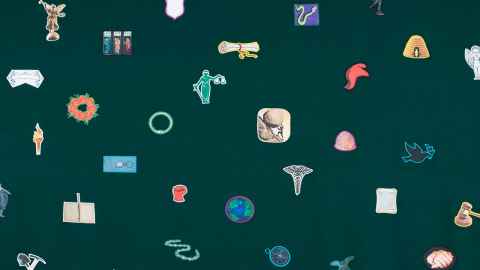The rehabilitation of the Red Aunt
31 July 2019
The banners of social activism provide a rich tapestry of our political past and present and we need to remember them, suggests Fiona Jack in her artworks on display at the Dowse Art Museum in Lower Hutt.

She is one of 14 artists who will feature in the exhibition, The Future of Work, which reflects on and explores the changing nature of our working lives and the ever-increasing impact of automation and globalisation.
Ms Jack is a conceptual artist and Senior Lecturer in the Faculty of Creative Arts and Industries at the University of Auckland, whose work explores socio-political issues, often looking to the past to explore the present.
For some years she has explored banners as identifiers and gathering devices for groups of people united for collective action.
Banners say a lot about us, she says, as a form of art and as pointers to our social and political histories.
Her own fascination with them started when she was at home with a baby in 2013 and wanted to “make stuff” in a way that was baby-friendly. “So I started stitching.”
“At the same time, I had a necklace made of a medal that was awarded to my great-great-grandfather, which is engraved on the back, ‘Awarded to J Jack and Sons for Biscuits.’”
“The Glasgow Bakers Association had their annual awards,” she explains. “And this is a beautiful cast metal medal with a little loop on it, engraved with these traditional trade unions symbols.”
Banners say a lot about us, as a form of art and as pointers to our social and political histories.
She began researching the visual representations of trade unionism and social activism found in banners, also began making banners for art, and for activist groups.
The Future of Work will include her work, Campfire Cognitive Dissonance, a blanket embroidered with images that have featured in trade union banners over the last 150 years.
“It’s an unhappy collection in some ways, and raises questions about the precariousness of work these days.”
The piece will not be hung on the wall, but people can wrap it around themselves or sit on it. “I want it to be used,” she says.
Mum, Helen & Me, a “project toward publication and an artist book made in the process of trying to get it published” will also feature in the exhibition.
The work is based on her great-great-aunt, Helen Crawfurd, known as the “Red Aunt” in the family.
Ms Jack found out about her in recent years and also that she had written an autobiography that was held in the Marx Memorial Library in London.
It’s the story of a Scottish suffragette and one of the founders of the Communist Party in Scotland who, among other ventures, travelled by boat, dinghy and troop-train to visit Lenin in the early 1900s.
“Contemporaries of hers who did less than she did became national heroes because they were aligned to the Labour Party, which has a vested interest in making their history significant. But many believe that people like Helen have fallen away from history because they were communists.”
The third piece on display is a banner, onto which the word ‘tiresome’ has been stitched, over and over again.
“It’s really a personal response that came about while I was making all these banners for social groups.
“I was thinking about the title of Ranginui Walker’s book, Ka Whawhai Tonu Matou - Struggle Without End. And about these activists who are tirelessly working through the same problems, relentlessly activating for social change.”
On a more upbeat note, she recalls coming to the end of her great-great-aunt’s autobiography. “I was struck by the last sentence – ‘The world is ours. Let us go in and possess it.’”
The Future of Work, Dowse Art Museum, 3 August to 17 November
Media contact
Margo White I Media adviser
DDI 09 923 5504
Mob 021 926 408
Email margo.white@auckland.ac.nz